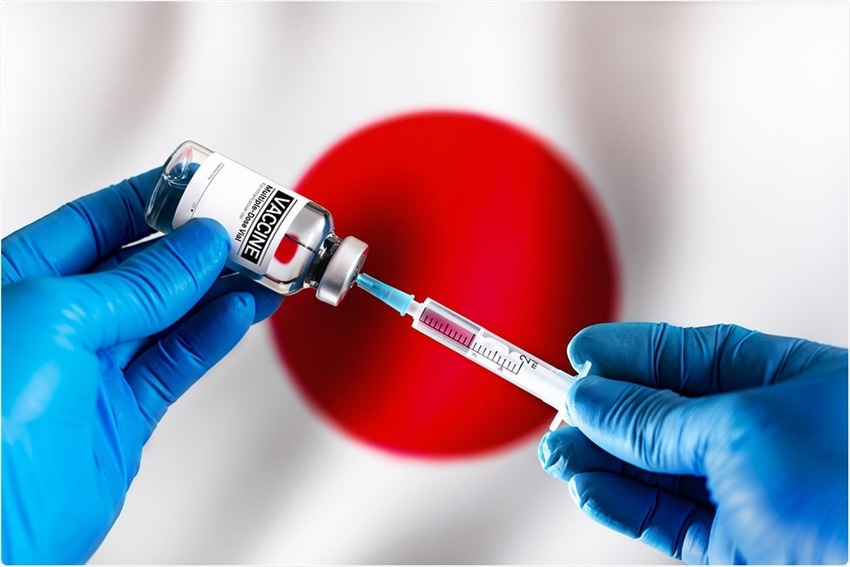Tips on How to Treat COVID-19 Vaccine Side Effects

Though Japan’s vaccine rollout still lags behind other developed countries, more and more people have been getting their jabs.
To date, over 49 million people — about 39% of Japan’s total population — have been fully vaccinated with either the Pfizer or Moderna vaccines. And, from Aug. 16, the AstraZeneca vaccine has also become available (in emergency cases) for people over the age of 40. As more people get vaccinated, the shot’s potential short-term side effects have become better known.
General Symptoms
According to the World Health Organization, experiencing side effects from a vaccine is normal and common, and is a sign that your immune system is responding to the shot and learning how to fight the virus.
Research on 20,000 Pfizer and 10,000 Moderna vaccine recipients by Juntendo University in Tokyo found that common reactions included fever, headaches, redness or soreness around the injection site, and fatigue — all of which differ depending on your age, gender and the type of vaccine you receive.
Soreness around the injection site, for example, was experienced by around 90% of Moderna and Pfizer vaccine recipients after the first and second shot while a fever was observed mainly after the following day of the second shot in about 76% of Moderna recipients and around 37% for Pfizer.
When looking at recipients by age, younger people are more likely to develop a fever. While around 10% of people in their 70s had a fever after their second Pfizer vaccine, the rate was above 45% for those in their 30s and 50% for those in their 20s. Also, the rate was higher for women in all age groups.
Additionally, in rare cases the vaccine has been reported to interfere with women’s menstruation cycles, including breakthrough bleeding and cramping, though these symptoms are not considered potential side effects. However, one nurse at a general hospital in Kanagawa Prefecture says, “It’s possible that a hormone imbalance is caused by the vaccine and can result in those conditions.”
When you can’t manage the side effects by yourself at home, it may be a sign to go see a doctor, especially when symptoms include less-common reactions such as dizziness or breathing problems. Experts recommend that if severe symptoms continue for three to four days after your vaccination, you may want to consult with a doctor, as side effects are usually short-lived.
Home Remedies
Since many of us are already aware of the possibility of side effects from the COVID-19 vaccines, some are preparing ahead of their jabs.
Nutritionists suggest eating foods that are good for the immune system: broccoli, garlic, citrus fruits, ginger and green tea to name a few. These won’t protect you from the actual coronavirus or vaccine side effects, they just help keep you healthy so you’ll be in tiptop shape should you come down with anything.
The nurse adds that it’s better to refrain from drinking alcohol and hard exercise after your vaccination, and, if you develop a fever, keep yourself hydrated especially during the summer. She recommends Otsuka Pharmaceutical’s OS-1, an oral rehydration solution good for mild to moderate dehydration that you can find at most supermarkets and pharmacies. Another option is adding a bit of lemon juice and salt to your water, or sports drinks if you have them. For swelling or burning around the injection area, applying a cool, damp cloth or a wrapped ice pack may help.
If you come down with a fever after receiving the vaccine, don’t worry. This is a sign that your immune system is responding to the shot. However, if you find it difficult to manage certain side effects (headaches or a high fever) on your own, then taking a painkiller is an option.
First of all, don’t take a painkiller preventatively. You really only need one if you find the side effects to be overwhelming. Japan’s health ministry suggests three types of medication: acetaminophen, ibuprofen and loxoprofen. (The latter two of these shouldn’t be taken on an empty stomach.)
Acetaminophen will lower your fever and can be taken by children, the elderly and pregnant or nursing women. Some popular brands available in Japan include Tylenol and Acetaminophen-jo HP.
Ibuprofen and loxoprofen reduce inflammation, but check the package to see if you are OK to take them (some are not recommended for children, for example). Brands available in Japan with these pain relievers include Eve, Bufferin Premium and Naron Ace for ibuprofen, and Loxonin and Bufferin EX for loxoprofen.
If you want to find out what ingredients are used in the medicine you’re taking, look for the 成分表示 (seibun hyо̄ji, list of ingredients) on the package.
Multilingual Health Care Support
Short of taking a dictionary with you when examining the list of ingredients on a Bufferin pack, various organizations and companies can provide multilingual health care support.
A wide range of information about Japan’s various services, including childcare, emergency and mental health, is available at Japan Healthcare Info. If you don’t speak Japanese well enough to go on your own, it can also help you find the right institution, arrange an appointment and even provide interpretation. Reach out through its online contact form.
If you’d prefer talking with someone directly, AMDA International Medical Information Center can offer consulting services in eight different languages via telephone. If you think you need to talk to a doctor, for ¥1,000 Online Home Doctor can connect you and a doctor via Zoom for a consultation in English, Chinese, Vietnamese or Japanese. Doctors can also conduct a telemedical examination and prescribe medicine if needed for an additional charge.
Good luck with your vaccination, and お大事に (o-daiji ni, get well soon).
























